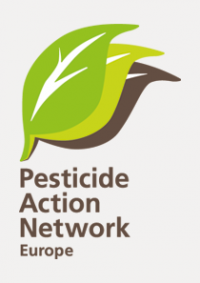EMA opens the gates to hazardous pesticides
Brussels, Utrecht, 30 March 2021 - Forty-seven pesticides were detected in human hair samples taken from 21 volunteers in the Netherlands. The findings of our new report [LINK] mainly concerned harmful insecticides that are banned in agriculture such as Fipronil, Permethrin and DEET, but still authorised for treatment of pets against fleas and ticks or authorised as a biocide. These veterinary chemicals and biocides are the most likely source of hair contamination.
The European Medicines Agency (EMA) authorises veterinary products for pets containing these and other harmful insecticides at very high doses, for instance Fipronil at a dose up to 250.000 times higher than the EU acceptable human daily intake (ADI). At the same time, the EMA doesn’t take indirect effects on humans through air or contact via the skin into account. Further, no ecological risk assessment for non-target insects is required, although the dose of all investigated veterinary products based on synthetic insecticides and advised for treating pets against flees, ticks and lice, is high enough to kill many millions of bees or other insects.
Hair testing is a unique method to evaluate chronic exposure of humans to pesticides, in this case over a period of 6 months. The survey, performed by the Pesticide Action Network (Europe jointly with the Netherlands chapter), shows that exposure in urban areas in and around house is an important route of exposure to pesticides. The insect-repellent DEET was almost always detected (95% of the samples), while Permethrin was detected in about half of the samples (48%) and Fipronil in 14% of the samples. In those participants to the study living close to agricultural fields several additional fungicides (azoxystrobin, carbendazim, dodine) could be detected.
The detected levels of some of the pesticides are high. For Fipronil, a detected level of 0,31 mg/kg in hair exceeds by far the EU ‘acceptable’ daily intake of 0,0002 mg/kg. The risks exceed governmental standards, if the cocktails that humans are exposed to on a daily basis are taken into account. Independent literature shows that, in the case of Fipronil, even brain-damaging harmful effects (behavioural effects on new-born mice) are observed at the (governmental) ‘no-effect’ (safe) level. Moreover, the EMA-advised dose of insecticides for the treatment of pets poses a high risk for insects, for biodiversity in the garden as well as for parks and nature areas as a whole.
Contact:
- Hans Muilerman, Chemicals Coordinator, Pesticides & Alternatives, Pesticide Action Network Europe, hans [at] pan-europe.info || tel: +31 6 55 80 72 55
- Margriet Mantingh, Chair person of Pesticide Action Network Netherlands, margriet.mantingh [at] wecf.org || tel +31 6 12532813
